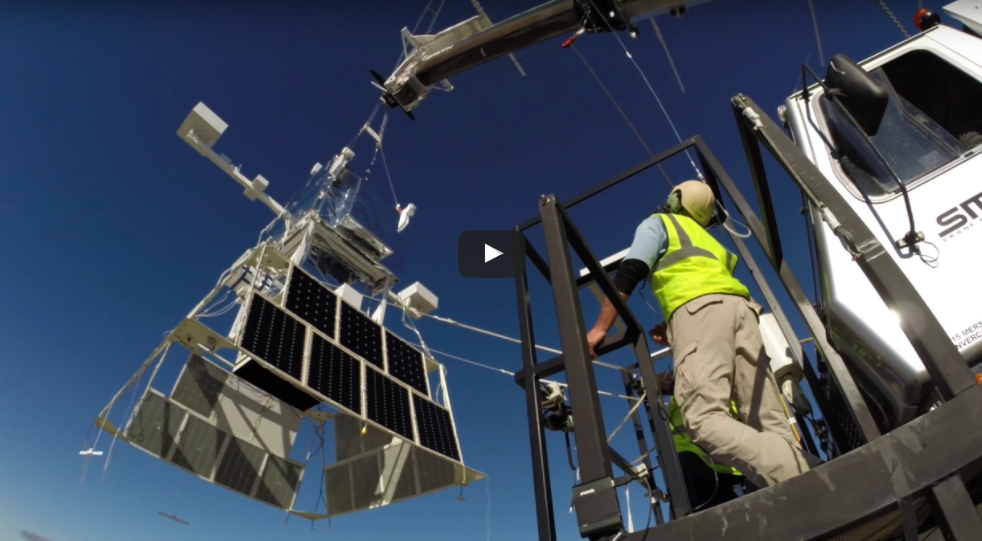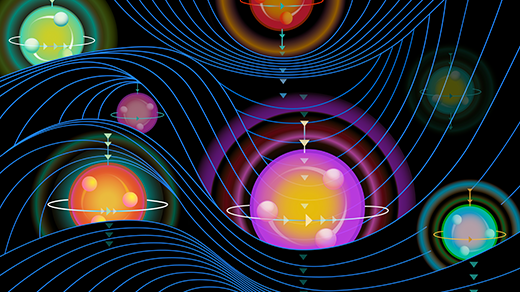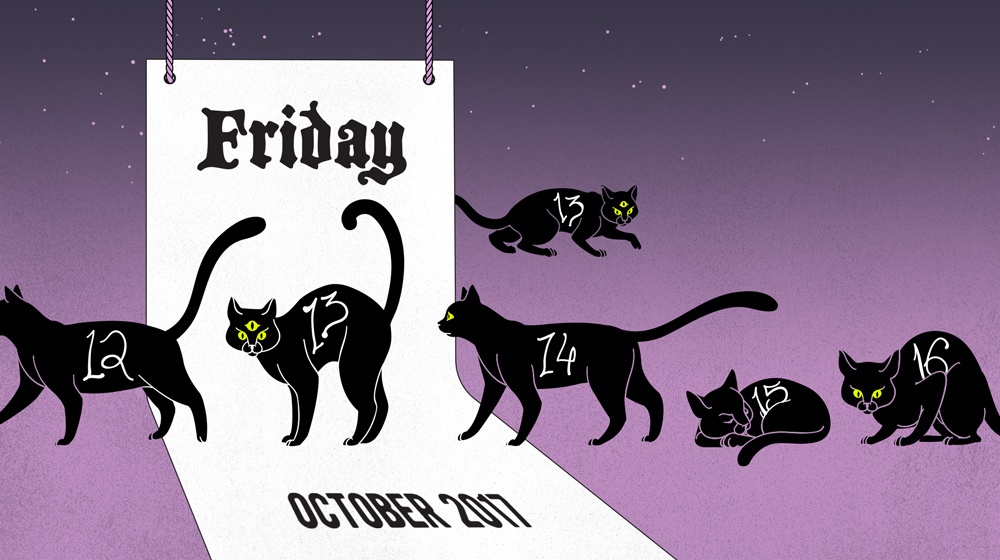A Cosmic-Ray Hunter Takes to the Sky
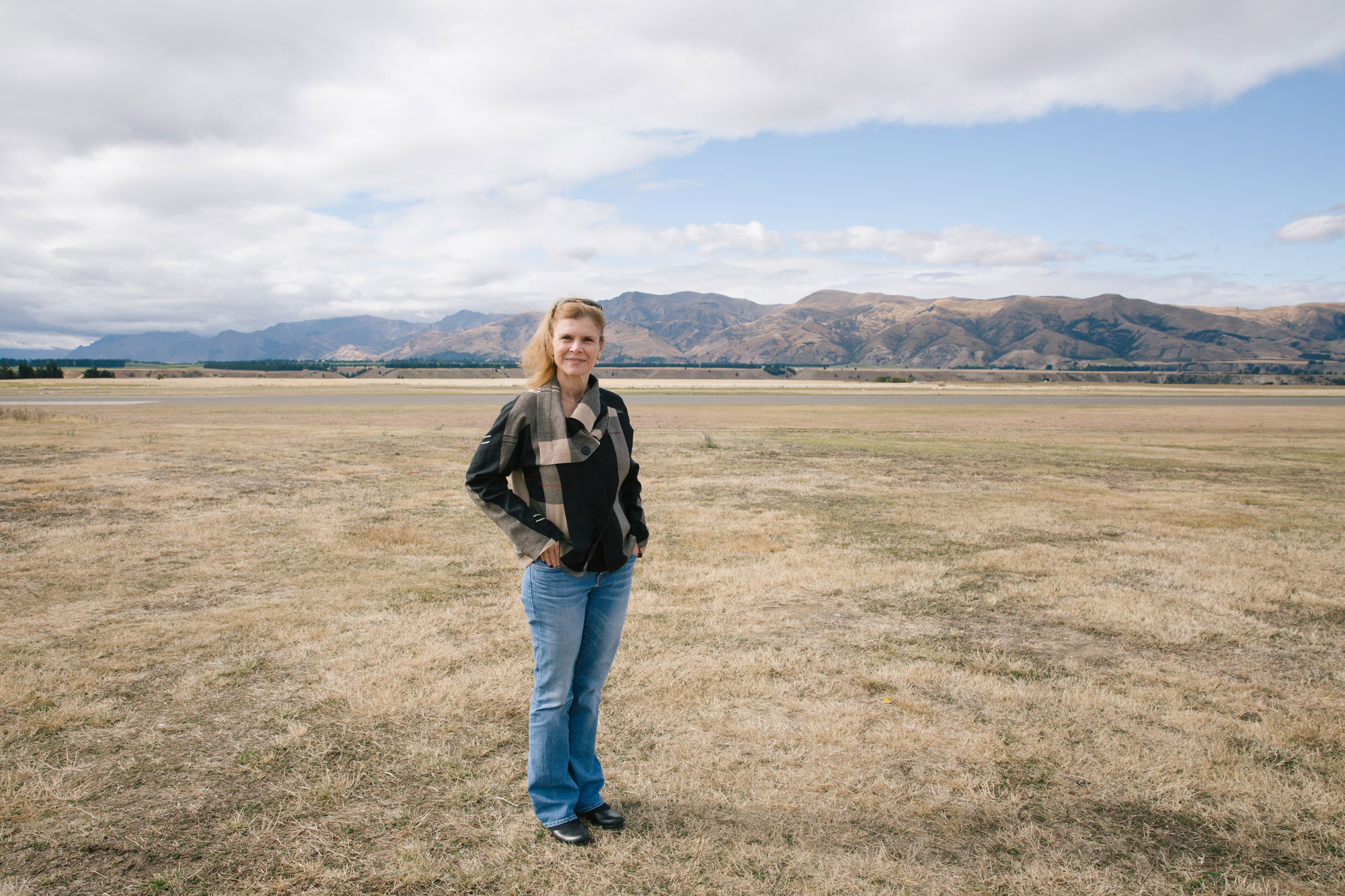
Angela Olinto in Wanaka, New Zealand, in March.
Alpine Images for Quanta Magazine
Introduction
On April 25, at 10:50 a.m. local time, a white helium balloon ascended from Wanaka, New Zealand, and lifted Angela Olinto’s hopes into the stratosphere. The football stadium-size NASA balloon, now floating 20 miles above the Earth, carries a one-ton detector that Olinto helped design and see off the ground. Every moonless night for the next few months, it will peer out at the dark curve of the Earth, hunting for the fluorescent streaks of mystery particles called “ultrahigh-energy cosmic rays” crashing into the sky. The Extreme Universe Space Observatory Super Pressure Balloon (EUSO-SPB) experiment will be the first ever to record the ultraviolet light from these rare events by looking down at the atmosphere instead of up. The wider field of view will allow it to detect the streaks at a faster rate than previous, ground-based experiments, which Olinto hopes will be the key to finally figuring out the particles’ origin.
Olinto, the leader of the seven-country EUSO-SPB experiment, is a professor of astrophysics at the University of Chicago. She grew up in Brazil and recalls that during her “beach days in Rio” she often wondered about nature. Over the 40 years since she was 16, Olinto said, she has remained captivated by the combined power of mathematics and experiments to explain the universe. “Many people think of physics as hard; I find it so elegant, and so simple compared to literature, which is really amazing, but it’s so varied that it’s infinite,” she said. “We have four forces of nature, and everything can be done mathematically. Nobody’s opinions matter, which I like very much!”
Olinto has spent the last 22 years theorizing about ultrahigh-energy cosmic rays. Composed of single protons or heavier atomic nuclei, they pack within quantum proportions as much energy as baseballs or bowling balls, and hurtle through space many millions of times more energetically than particles at the Large Hadron Collider, the world’s most powerful accelerator. “They’re so energetic that theorists like me have a hard time coming up with something in nature that could reach those energies,” Olinto said. “If we didn’t observe these cosmic rays, we wouldn’t believe they actually would be produced.”
Olinto and her collaborators have proposed that ultrahigh-energy cosmic rays could be emitted by newly born, rapidly rotating neutron stars, called “pulsars.” She calls these “the little guys,” since their main competitors are “the big guys”: the supermassive black holes that churn at the centers of active galaxies. But no one knows which theory is right, or if it’s something else entirely. Ultrahigh-energy cosmic rays pepper Earth so sparsely and haphazardly — their paths skewed by the galaxy’s magnetic field — that they leave few clues about their origin. In recent years, a hazy “hot spot” of the particles coming from a region in the Northern sky seems to be showing up in data collected by the Telescope Array in Utah. But this potential clue has only compounded the puzzle: Somehow, the alleged hot spot doesn’t spill over at all into the field of view of the much larger and more powerful Pierre Auger Observatory in Argentina.
To find out the origin of ultrahigh-energy cosmic rays, Olinto and her colleagues need enough data to produce a map of where in the sky the particles come from — a map that can be compared with the locations of known cosmological objects. “In the cosmic ray world, the big dream is to point,” she said during an interview at a January meeting of the American Physical Society in Washington, D.C.
She sees the current balloon flight as a necessary next step. If successful, it will serve as a proof of principle for future space-based ultrahigh-energy cosmic-ray experiments, such as her proposed satellite detector, Poemma (Probe of Extreme Multi-Messenger Astrophysics). While in New Zealand in late March preparing for the balloon launch, Olinto received the good news from NASA that Poemma had been selected for further study.
Olinto wants answers, and she has an ambitious timeline for getting them. An edited and condensed version of our conversations in Washington and on a phone call to New Zealand follows.
What was your path to astrophysics and ultrahigh-energy cosmic rays?
I was really interested in the basic workings of nature: Why three families of quarks? What is the unified theory of everything? But I realized how many easier questions we have in astrophysics: that you could actually take a lifetime and go answer them. Graduate school at MIT showed me the way to astrophysics — how it can be an amazing route to many questions, including how the universe looks, how it functions, and even particle physics questions. I didn’t plan to study ultrahigh-energy cosmic rays; but every step it was, “OK, it looks promising.”
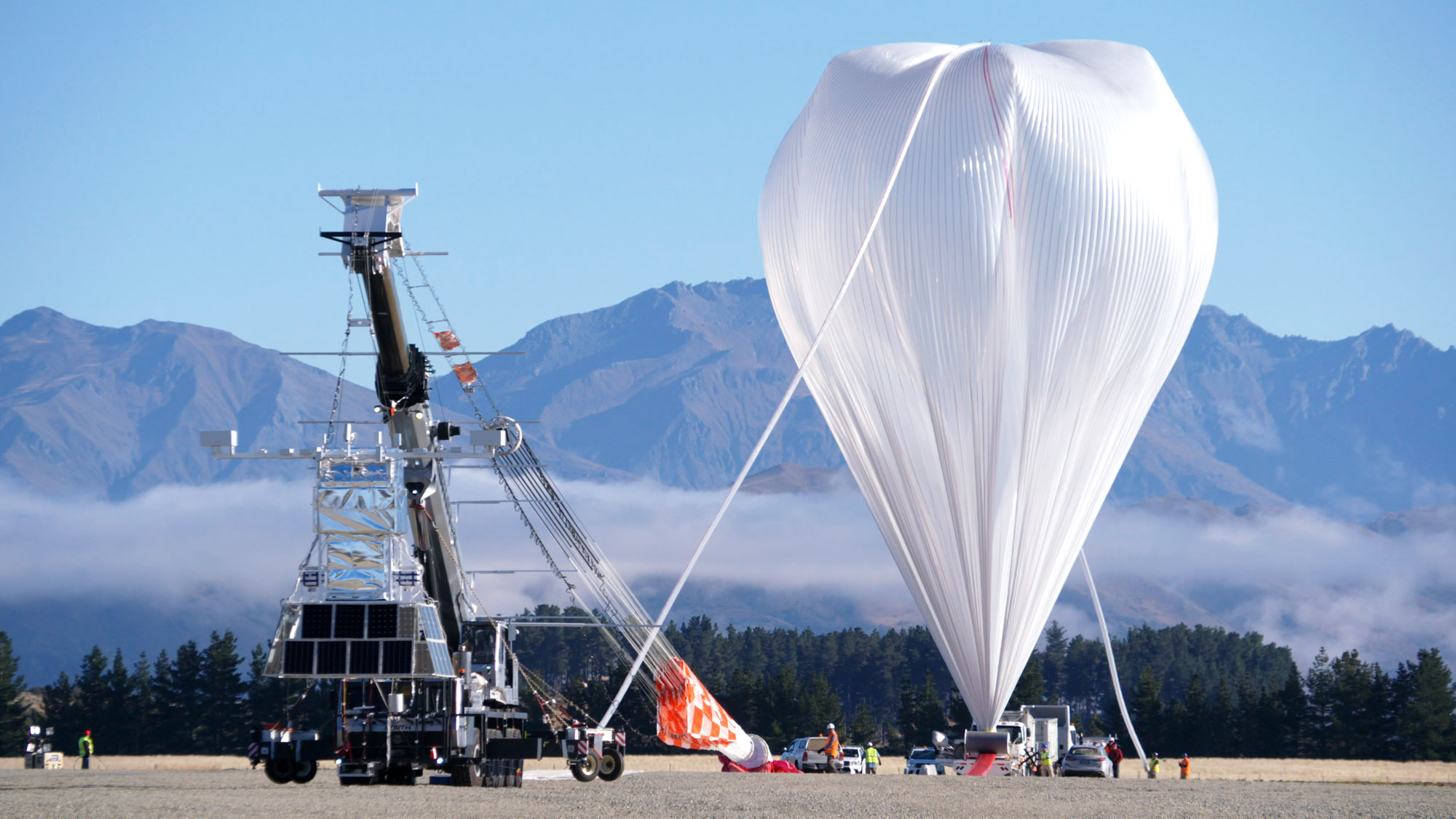
Track the balloon’s flight path here.
How long have you been trying to answer this particular question?
In 1995, we had a study group at Fermilab for ultrahigh-energy cosmic rays, because the AGASA (Akeno Giant Air Shower Array) experiment was seeing these amazing events that were so energetic that the particles broke a predicted energy limit known as the “GZK cutoff.” I was studying magnetic fields at the time, and so Jim Cronin, who just passed away last year in August — he was a brilliant man, charismatic, full of energy, lovely man — he asked that I explain what we know about cosmic magnetic fields. At that time the answer was not very much, but I gave him what we did know. And because he invited me I got to learn what he was up to. And I thought, wow, this is pretty interesting.
Later you helped plan and run Pierre Auger, an array of detectors spread across 3,000 square kilometers of Argentinian grassland. Did you actually go around and persuade farmers to let you put detectors on their land?
Not me; it was the Argentinian team who did the amazing job of talking to everybody. The American team helped build a planetarium and a school in that area, so we did interact with them, but not directly on negotiations over land. In Argentina it was like this: You get a big fraction of folks who are very excited and part of it from the beginning. Gradually you got through the big landowners. But eventually we had a couple who were really not interested. So we had two regions in the middle of the array that were empty of the detectors for quite some time, and then we finally closed it.
Space is much easier in that sense; it’s one instrument and no one owns the atmosphere. On the other hand, the nice thing about having all the farmers involved is that Malargüe, the city in Argentina that has had the detectors deployed, has changed completely. The students are much more connected to the world and speak English. Some are coming to the U.S. for undergraduate and even graduate school eventually. It’s been a major transformation for a small town where nobody went to college before. So that was pretty amazing. It took a huge outreach effort and a lot of time, but this was very important, because we needed them to let us in.
Why is space the next step?
To go the next step on the ground — to get 30,000 square kilometers instrumented — is something I tried to do, but it’s really difficult. It’s hard enough with 3,000; it was crazy to begin with, but we did it. To get to the next order of magnitude seems really difficult. On the other hand, going to space you can see 100 times more volume of air in the same minute. And then we can increase by orders of magnitude the ability to see ultrahigh-energy cosmic rays, see where they are coming from, how they are produced, what objects can reach these kinds of energies.
What will we learn from EUSO-SPB?
We will not have enough data to revolutionize our understanding at this point, but we will show how it can be done from space. The work we do with the balloon is really in preparation for something like Poemma, our proposed satellite experiment. We plan to have two telescopes free-flying and communicating with each other, and by recording cosmic-ray events with both of the them we should be able to also reproduce the direction and composition very precisely.
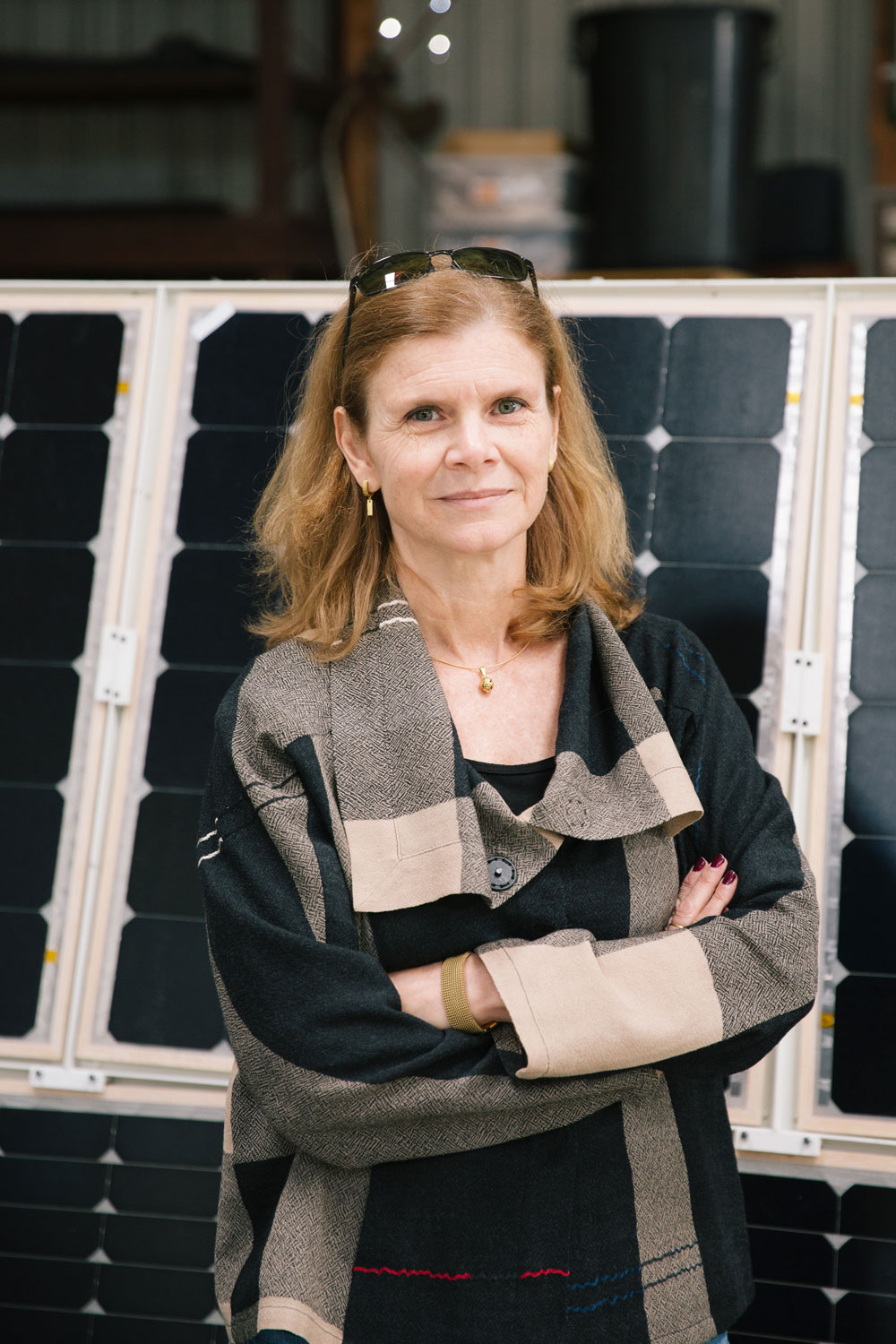
Alpine Images for Quanta Magazine
Speaking of Poemma, do you still teach a class called Cosmology for Poets?
We don’t call it that anymore, but yes. What it entails is teaching nonscience majors what we know about the history of the universe: what we’ve learned and why we think it is the way it is, how we measure things and how our scientific understanding of the history of the universe is now pretty interesting. First, we have a story that works brilliantly, and second, we have all kinds of puzzles like dark matter and dark energy that are yet to be understood. So it gives the sense of the huge progress since I started looking at this. It’s unbelievable; in my lifetime it’s changed completely, and mostly due to amazing detections and observations.
One thing I try to do in this course is to mix in some art. I tell them to go to a museum and choose an object or art piece that tells you something about the universe — that connects to what we talked about in class. And here my goal is to just make them dream a bit free from all the boundaries of science. In science there’s right and wrong, but in art there are no easy right and wrong answers. I want them to see if they can have a personal attachment to the story I told them. And I think art helps me do that.
You’ve said that when you left Brazil for MIT at 21, you were suffering from a serious muscle disease called polymyositis, which also recurred in 2006. Did those experiences contribute to your drive to push the field forward?
I think this helps me not get worked up about small stuff. There are always many reasons to give up when working on high-risk research. I see some colleagues who get worked up about things that I’m like, whatever, let’s just keep going. And I think that attitude to minimize things that are not that big has to do with being close to death. Being that close, it’s like, well, everything is positive. I’m very much a positive person and most of the time say, let’s keep pushing. I think having a question that is not answered that is well posed is a very good incentive to keep moving.
Between the “big guys” and the “little guys” — black holes versus pulsating neutron stars — what’s your bet for which ones produce ultrahigh-energy cosmic rays?
I think it’s 50-50 at this point — both can do it and there’s no showstopper on either side — but I root always for the underdog. It looks like ultrahigh-energy cosmic rays have a heavier composition, which helps the neutron star case, since we had heavy elements in our neutron star models from the beginning. However, it’s possible that supermassive black holes do the job, too, and basically folks just imagine that the bigger the better, so the supermassive black holes are usually a little bit ahead. It could be somewhere in the middle: intermediate-mass black holes. Or ultrahigh-energy cosmic rays could be related to other interesting phenomena, like fast radio bursts, or something that we don’t know anything about.
When do you think we’ll know for sure?
You know how when you climb the mountain — I rarely look at where I’m going. I look at the next two steps. I know I’m going to the top but I don’t look at the top, because it’s difficult to do small steps when the road is really long. So I don’t try to predict exactly. But I would imagine — we have a decadal survey process, so that takes quite some time, and then we have another decade — so let’s say, in the 2030s we should know the answer.
This article was reprinted on Wired.com.
